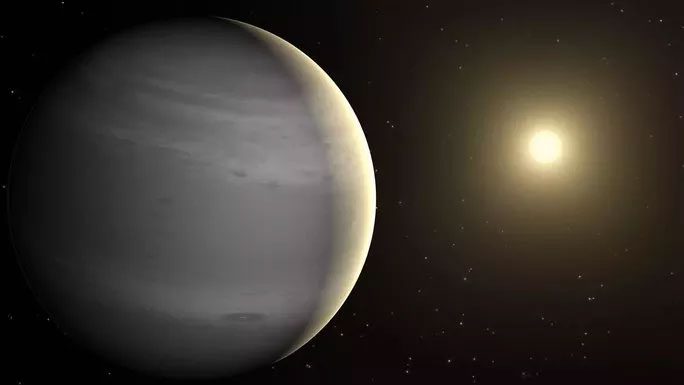A planet that should not exist, named HD 114082 b, is disrupting long-standing astronomical models and algorithms.
This is a giant gas planet orbiting an F-type star called HD 114082. According to NASA, it is located approximately 0.5109 astronomical units (AU) from its parent star and has a mass eight times that of Jupiter.
However, these seemingly normal parameters are puzzling astronomers, as measurements reveal unusual data: It is only the size of Jupiter.

Graphic depicting planet HD 114082 b and its parent star, a bizarre pair located 300 light-years away – (Image: NASA/JPL-Caltech).
With such peculiar mass and size, its density must be twice that of Earth, which is quite unreasonable since the density of gas planets should be lower than that of rocky planets (like Earth and Mars) by a significant margin.
One possible “excuse” is that it could be much heavier than Jupiter because it is still young, yet even so, it remains excessively dense. “Compared to currently accepted models, HD 114082 b is about 2-3 times denser than a young gas giant aged 15 million years like it” – said astrophysicist Olga Zakhozhay from the Max Planck Institute for Astronomy (MPIA, Germany), who leads the research.
This clearly means that HD 114082 b does not align with either of the two prevailing models for the formation of giant gas planets: “cold start” and “hot start,” suggesting it may have originated through a different process, refined from one of the two models or entirely separately.
“All we can say is that we still do not fully understand the formation of giant planets” – remarked astronomer Ralf Launhardt, also from MPIA.
For researchers, HD 114082 b promises to open new doors for understanding how other worlds have formed, a process that remains largely a patchwork of models assembled from limited data.
The study was conducted in collaboration between MPIA and the Main Astronomical Observatory of the National Academy of Sciences of Ukraine, and it was recently published in the scientific journal Astronomy & Astrophysics.


















































